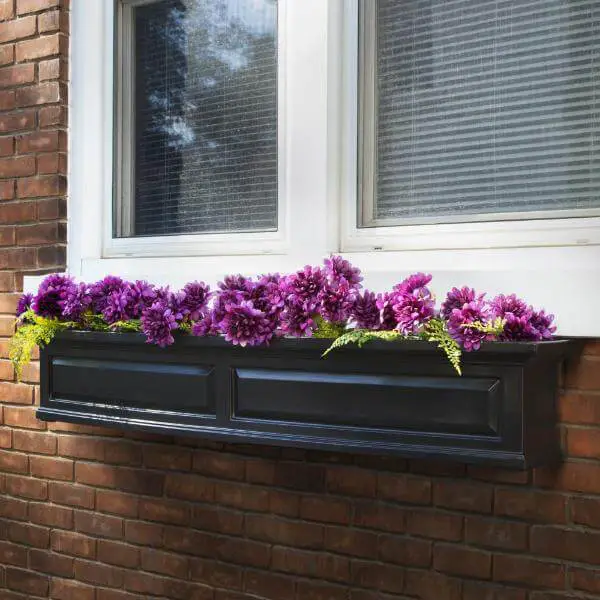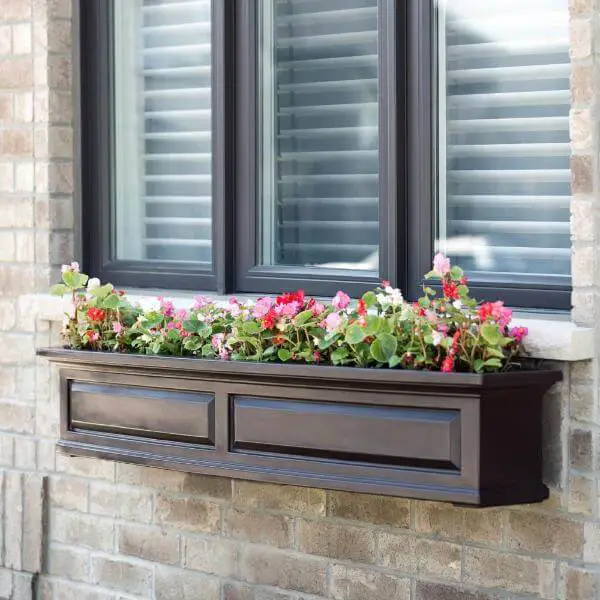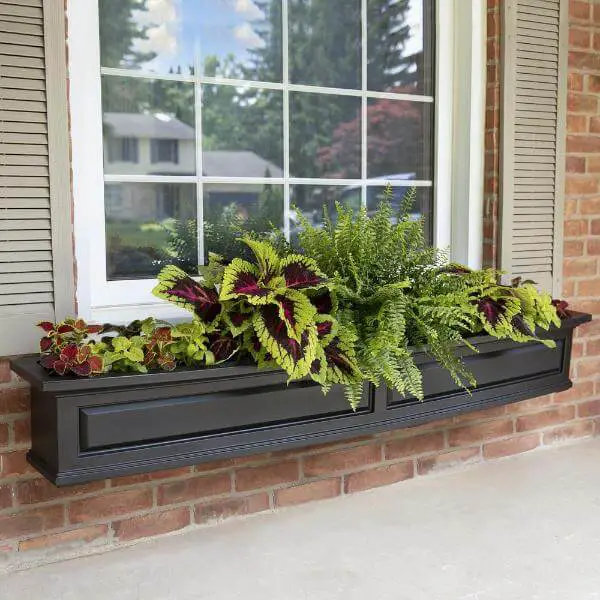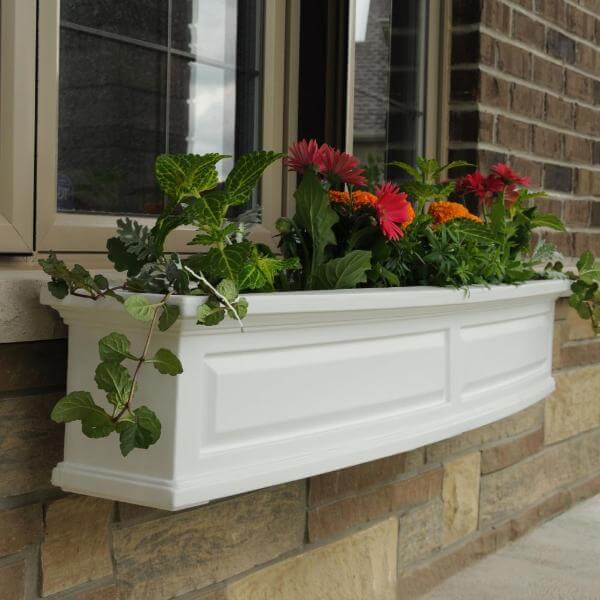This is the window box with a concealed water reservoir that collects and conserves water. It accommodates soil for your favorite flowers and gallons of water to keep them constantly hydrated.
Constructed from 100% polyethylene, the planter box will not fade or yellow and unlike similar wooden units, it does not require painting or staining.









Its unique bowed front and crown molding detail provides a distinguished look that enhances the overall beauty of a backyard or home’s exterior. With a built-in overflow drain, and mounting hardware.
Elevate Your Garden: The Art of Window Boxes for Flowers
Window boxes are not merely quaint additions to homes; they are canvases waiting to burst with color and life, transforming dull facades into vibrant showcases of botanical beauty. These miniature gardens offer a unique opportunity to exercise creativity and bring the joy of gardening to even the most limited of spaces. Whether you’re a seasoned green thumb or a novice enthusiast, window boxes for flowers provide an accessible and versatile means to cultivate nature’s wonders right outside your window.
History and Evolution
The history of window boxes dates back centuries, with origins tracing to the Hanging Gardens of Babylon and the ancient Romans’ use of portable planters. However, the modern window box as we know it emerged during the Renaissance period in Europe when urban dwellers sought ways to infuse nature into their city abodes. Over time, window boxes evolved from utilitarian herb gardens to elaborate floral displays, becoming an integral part of architectural aesthetics.
Design and Materials
Today, window boxes come in an array of designs, sizes, and materials, catering to various tastes and practical considerations. Traditional materials like wood lend a rustic charm and can be painted or stained to complement architectural elements. Modern options include fiberglass, PVC, and metal, offering durability and low maintenance. When selecting a window box, consider factors such as weight, drainage, and insulation to ensure optimal plant health.
Choosing Plants
The key to a successful window box lies in thoughtful plant selection. Consider the climate, sun exposure, and color scheme when choosing plants to ensure harmonious growth. For sunny windows, vibrant blooms like petunias, geraniums, and marigolds thrive, while shade-tolerant varieties such as impatiens, ferns, and begonias are ideal for shadier spots. Incorporate trailing plants like ivy or bacopa to add dimension and cascading beauty.
Planting and Care
Proper planting techniques are essential for the health and longevity of your window box garden. Begin by layering the bottom of the container with gravel or packing peanuts to improve drainage. Use a high-quality potting mix enriched with compost to provide nutrients and ensure adequate moisture retention. Arrange taller plants at the back, followed by medium-height specimens, and finish with trailing varieties around the edges. Water regularly, ensuring the soil remains evenly moist but not waterlogged. Fertilize periodically to promote healthy growth and vibrant blooms.
Maintenance Tips
Regular maintenance is key to keeping your window box garden flourishing throughout the seasons. Deadhead spent blooms to encourage continuous flowering and remove any diseased or damaged foliage promptly. Monitor soil moisture levels, adjusting watering frequency as needed, and be vigilant for pests or signs of nutrient deficiencies. Prune overgrown plants to maintain shape and prevent overcrowding, allowing each specimen ample space to thrive.
Seasonal Displays
One of the joys of window box gardening is the opportunity to change your display with the seasons, offering endless creative possibilities. Embrace the vibrant hues of spring with tulips, daffodils, and pansies, transition to lush summer blooms like zinnias and sunflowers, and welcome the warm tones of autumn with chrysanthemums and ornamental kale. In winter, adorn your window boxes with evergreen boughs, berries, and festive accents for a touch of holiday cheer.
Community and Inspiration
Window box gardening is not only a personal endeavor but also a means to connect with your community and inspire others to embrace nature in urban settings. Share tips and ideas with fellow gardeners, participate in local gardening clubs or workshops, and take pride in the beauty you create for passersby to enjoy. Draw inspiration from botanical gardens, design magazines, and online resources to continually evolve your window box displays and cultivate your green thumb.
Conclusion
In a world where green spaces are increasingly scarce, window boxes offer a tangible solution to bring nature closer to home. Whether adorning a city apartment or a suburban cottage, these miniature gardens have the power to uplift spirits, foster creativity, and enrich lives. With careful planning, thoughtful design, and a touch of passion, anyone can transform their windows into veritable works of art, blooming with the beauty of nature for all to behold.